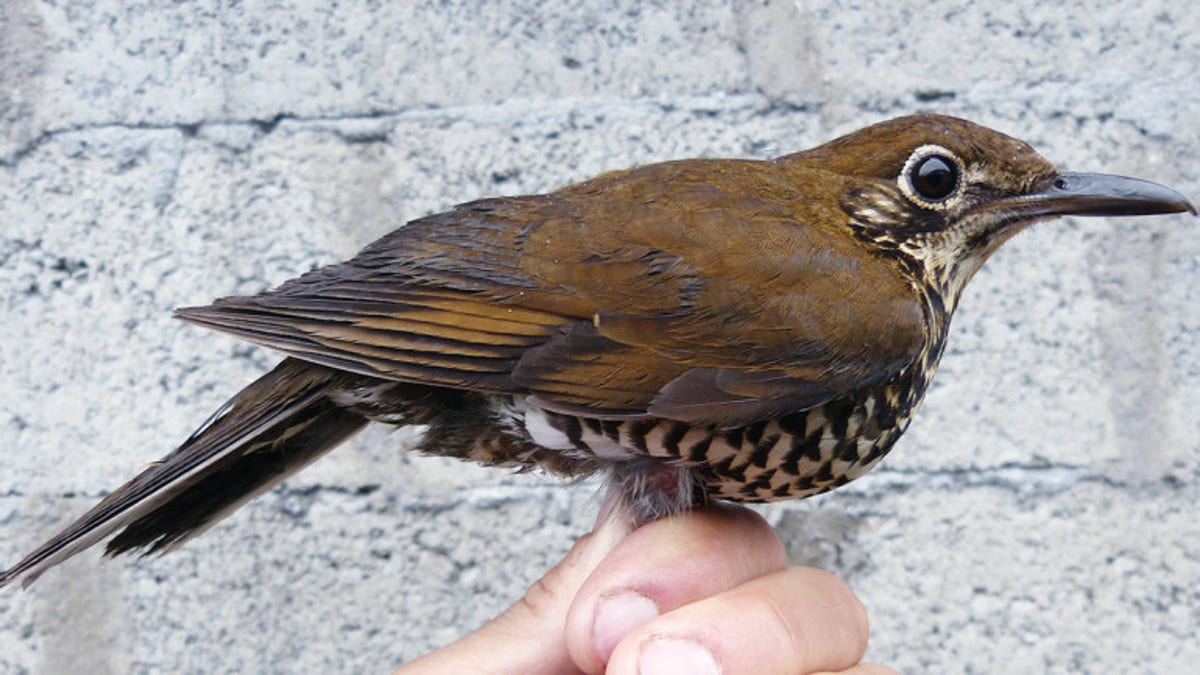
Himalayan Forest Thrush Zoothera salimalii, Dulongjiang, Yunnan province, China, June 2014. (Craig Brelsford)
A new species of forest thrush has been discovered in a remote region of northeastern India, making it only the fourth new bird discovered in the country since independence in 1947.
The bird, called the Himalayan forest thrush Zoothera salimalii, is similar in appearance to the raspy singing plain-backed thrush Zoothera mollissima. But the Himalayan thrush’s melodic song and its penchant to favor dense coniferous forests with good undergrowth suggested it could be a new species.
“It was an exciting moment when the penny dropped, and we realized that the two different song types from plain-backed thrushes that we first heard in northeast India in 2009, and which were associated with different habitats at different elevations, were given by two different species,” said Per Alström, who is from Uppsala University in Sweden and was part of the team that discovered the bird.
“At first we had no idea how or whether they differed morphologically. We were stunned to find that specimens in museums for over 150 years from the same parts of the Himalayas could readily be divided into two groups based on measurements and plumage,” Rasmussen said
Related: Take a gander: Audubon Society's Christmas bird count underway
The bird is relatively abundant and easy to spot. But because it was so similar to the plain-backed thrush, it was largely treated as the same species.
“To an ornithologist, the Himalayan forest thrush sounds like Adele, while the alpine thrush sounds more like Rod Stewart,” said Wildlife Conservation Society’s Shashank Dalvi, who was among an international team that described the discovery in a study for the journal Avian Research.

Co-author Shashank Dalvi looking for thrushes 4200 m, Sela Pass, West Kameng, India, June 2009. (Per Alström)
The bird’s scientific name honors the great Indian ornithologist Sálim Ali (1896–1987), in recognition of his huge contributions to the development of Indian ornithology and wildlife conservation.
Related: World needs to do more to protect migratory birds, marine species, scientists say
To confirm this was indeed a new species, the researchers turned to DNA analysis. They concluded
the two species of thrush were in fact different. The plain-backed thrush has now been re-named the alpine thrush.

The new bird is named Himalayan forest thrush Zoothera salimalii. The scientific name honors the Indian ornithologist Sálim Ali. (Per Alstrom)
Further analyses of plumage, structure, song, DNA and ecology from throughout the range of the plain-backed thrush revealed that a third species was present in central China – the Sichuan forest thrush.
Related: These birds have a mating dance that would put Gene Kelly to shame
DNA analyses suggested that these three species have been genetically separated for several million years. Genetic data from three old museum specimens indicated the presence of a fourth species from China that remains unnamed.
New bird species are rarely discovered nowadays. Since 2000, an average of five new species per year have been discovered globally, most of which are from South America.




















